
The First and Only Weekly Online Fanzine Devoted to the Life and Works of Edgar Rice Burroughs
Since 1996 ~ Over 15,000 Webpages in Archive
Volume 0988
Presents
ERB ECLECTICA
MOTES & QUOTES
ERB Newsmagazine 2002.12


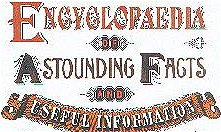 |
![]()
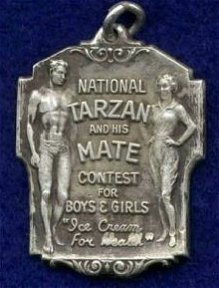
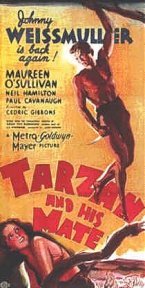
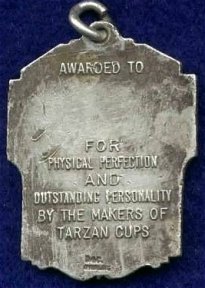
| This Sterling Silver medal was awarded to winners in the "National Tarzan and His Mate Contest for Boys & Girls". The contest was held in conjunction with the release of the movie Tarzan and His Mate in 1934. The "Tarzan Cups" were 5-ounce ice cream cups that were licensed to dairys to produce. Both Foremost Dairies and Beatrice Creamery (Meadow Gold) were two of the known licensed producers. Foremost even ran a promotion where kids could send off 14 Tarzan Cup lids and get each of 22 Tarzan Magic Pictures, cutouts of characters in the Tarzan saga, including Jane and assorted wild animals -- hence the term "Ice Cream for Health" on the medal. The front of the medal reads: "National Tarzan and His Mate Contest for Boys & Girls" "Ice Cream for Health," while the reverse reads: "Awarded To ___________ for Physical Perfection and Outstanding Personality by the Makers of Tarzan Cups" |
SAMPLE QUESTIONS
|
Based on A Princess of Mars |
Based on Gods of Mars |
| Question 1:
What do the Martians call Mars? Barsoom Monsoon Basoon Howsoon Question 2:
Question 3:
Question 4:
Question 5:
Question 6:
Question 7:
Question 8:
Question 9:
Question 10:
|
Question 1:
How long was John Carter on Earth after leaving Mars at the end of the first book? 5 years 18 months 15 years 10 years Question 2:
Question 3:
Question 4:
Question 5:
Question 6:
Question 7:
Question 8:
Question 9:
Question 10:
|
PHONY URBAN LEGEND http://www.snopes.com/lost/tarzan.htmClaim: The Southern California community of Tarzana was so named after the famous "ape man" character created by Edgar Rice Burroughs, one of the town's early residents.
THIS CLAIM IS CORRECT... BUT FOR WHATEVER REASON, IT WAS DISPUTED AND THE FOLLOWING PHONY STORY WAS PRESENTED ON THE NET. DO NOT BELIEVE EVERYTHING YOU READ ON THE WEB. IT WAS LEFT ON THE SNOPES.COM SITE AS A MUDDLED CURIOSITY.Origins: Edgar Rice Burroughs, the creator of Tarzan, was born in Chicago in 1875. After being booted out of the Phillips Academy in Andover, Mass., Burroughs attended Orchard Lake Michigan Military Academy and later served in the cavalry for nearly a year in Arizona. Bored with army life, Burroughs obtained a discharge, got married, went off to mine for gold in Idaho, joined the police force in Salt Lake City, worked as an accountant, and returned to Chicago to work in the stenographic department at Sears, Roebuck before finally trying his hand at fiction. Burroughs sold his first "Tarzan" story to a magazine in 1912 but continued to move around as his book-length Tarzan efforts were turned down by all the publishers he contacted. Burroughs and his wife spent the winter of 1913 in San Diego, then returned to the Chicago suburb of Oak Park before the A.C. McClurg Co. published Burroughs' first book, Tarzan of the Apes, in 1914. The response was phenomenal, and Burroughs went on to pen twenty-three Tarzan novels in all.
In 1910, however, several years before he achieved success as a writer, Burroughs had purchased 550 acres in the heart of Southern California's San Fernando Valley. (Burroughs later wrote that the Valley represented "all that was good and wholesome in Southern California, in contrast to big, bad Hollywood.") He dubbed his land "Tarzana Ranch," after the sleepy little community in which it was situated, and his creation of a character named "Tarzan" two years later can hardly be considered a coincidence. Because Tarzana did not become an "official" community with its own post office until 1930 the legend has arisen that the town was named after Burroughs' ape man, but actually the reverse is true. Had Burroughs lived a few miles to the west, in the Topanga Canyon, we would undoubtedly know his immortal creation as "Topang, the ape man" instead.
For the real story go to:
http://www.erbzine.com/mag0/0008.html
Title: Of Sequels and Sons: Tarzan and the Problem of Paternity
Subject(s): BURROUGHS, Edgar Rice -- Characters -- Tarzan; TARZAN
(Fictitious character); TARZAN of the Apes (Book)
Source: Journal of American & Comparative Culture, Spring2000, Vol. 23
Issue 1, p41, 11p
Author(s): Gleason, William
Abstract: Analyzes the recapitulation theory in Tarzan volumes by writer Edgar Rice Burroughs. Concept of Tarzan, a fictitious character; Reference on book 'Tarzan of the Apes,' by Edgar Rice Burroughs; Repetition of events in Tarzan volumes; Overview of other volumes of Tarzan stories.
AN: 5886549
ISSN: 1537-4726
Database: MasterFILE Premier
A True Phenomenon
Review of Tarzan of the Apes for Amazon Books
www.amazon.ca
Reviewer: Bob Woodley from Toledo, OH USA
September 16, 2002It's difficult to measure the impact of this relatively simple story; one which generated half a billion dollars a few years ago as an animated film.
Tarzan of the Apes explores that which is within all of us; those primal drives and abilities which permitted us to survive as a species. Burroughs creates a hero who because of immense potentials and a truly unique maturation becomes a relatively believable "superman", in some respects; and he does it with engaging prose which sweeps you along and permits you to make that leap of faith necessary to believe in Tarzan.
The current criticisms we sometimes see that these books contain "racist" writing are wholly absurd. To say that Burroughs had honest beliefs that Caucasians were superior to other races or sub-groups is simply to say that he grew up more than a century ago. Virtually all whites held such views, and Burroughs would have learned nothing else; nor would have any of our ancestors, including the ancestors of these current critics.
However, to allege that Burroughs believed in discrimination based upon the color of one's skin; or that any of his positive characters, including Tarzan, ever engaged in any such discrimination, is utter nonsense. Burroughs examined the absurdity of superiority based upon skin color in his Barsoom (Mars) novels, where he portrays each race as utterly certain of his the inherent superiority of his own race, when in fact they are all clearly the same, except for color. Tarzan's adopted tribe, the Waziri, are portrayed as fierce, intelligent warriors, the equal of any white men. The ape-man himself was discriminated against by the apes, and throughout the entire saga he treats each person as an individual, irrespective of race or creed.
In The War Chief Burroughs portrays the Apache as magnificent, intelligent warriors who are every bit the equal of any white man. His books are so far ahead of his time when it comes to dealing with matters of race, prejudice, and equality that it's truly amazing, considering how long ago he wrote them.
"Tarzan of the Apes" is the creation of this mesmerizing character, from his infancy to his adulthood; and encounter with man, and ultimately Jane Porter. The theme enables Burroughs to explore mankind from the perspective of a man who was reared outside civilization; and his insights are often not flattering. Tarzan has all the ingredients we enjoy in a hero. He is handsome, brave, and has physical assets which are far beyond any other man. He also has some unusual, but realistic, attributes. He is arrogant, a loner, and prone to violence. Burroughs didn't ignore those characteristics which one might expect such an individual to be; and that's perhaps why the book and story have remained so timeless and enchanting for nearly a century, and for people all over the world.
This is a fascinating, action-filled story which is also thoughtful and interesting. Truly unique, it' a story of adversity and growth; a self-made man; and true love. Anyone who might have gained their impressions of Tarzan of the Apes from film, television, or comic books should take a look at the "true" Tarzan. Burroughs had no idea, of course, what he was creating when he wrote this story. It's just one of those ideas which resulted in a story which somehow achieved almost magical appeal and has continued to do so. It's not a complex story. Pulps didn't lend themselves to complex stories. It's a wonderful story, however; and I can't recommend it highly enough. --.
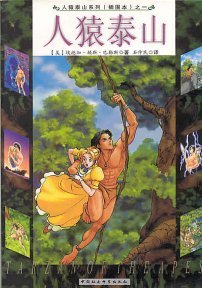
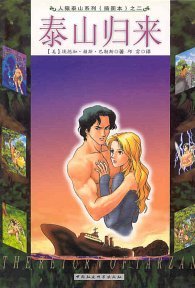
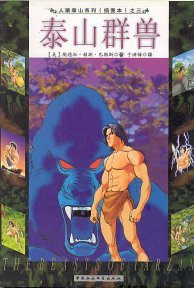
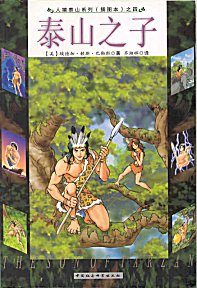
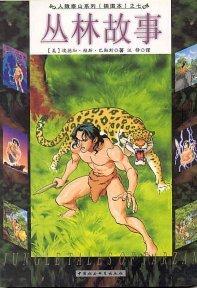
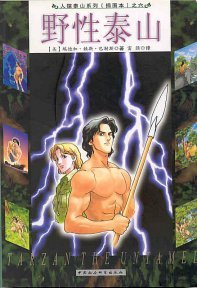
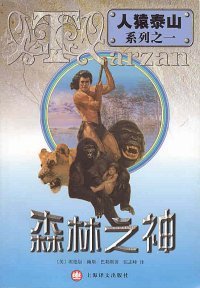
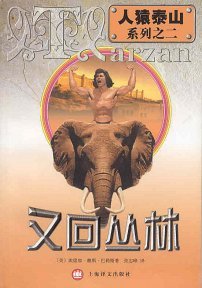
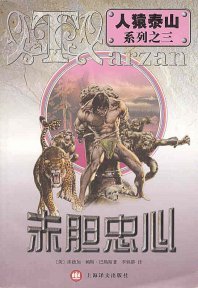
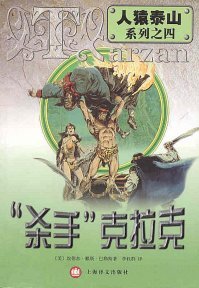
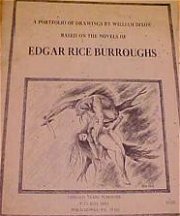 |
by William Dixon Published by Oswald Train. Included are ten 11 x 16 B+W prints: Tarzan, Deja Thoris, Ras Travas, La of Opar, A Girl of Pellucidar, David Innes and Dian The Beautiful, Tarzan (from Tarzan at the Earths Core), Nah-ee-La The Moon Maid, Nadara The Cave Girl, and Shoz Dijiji, war chief of the Apaches. The frontispiece is a portrait of ERB. |
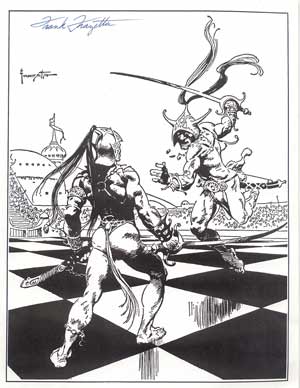
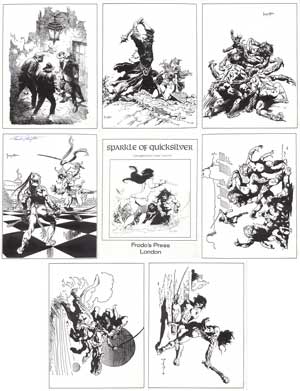
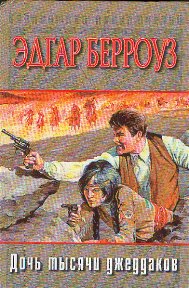
MAILSTROM
| A note from Johnny J. Weissmuller
(The grandson of Johnny (Tarzan) Weissmuller's first cousin - Adam Weissmuller -- see his web page to learn more about him.) http://www.codap.com/tarzan.htm SUBJECT: Re: TARZAN. MY FATHER (My Cousin)
|
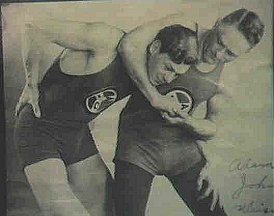 |
|
By Johnny Weissmuller Jr., William Reed and Craig Reed |
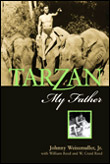 |
Tarzan, My Father is the authoritative biography of the most loved, and, for many, the only, Tarzan: Olympic swimming champion Johnny Weissmuller. Johnny Weissmuller, Jr., his only son, offers an intimate look at the man who played Tarzan to movie fans around the world. His father's early life, middle years, and eventual decline are all carefully chronicled, from his Olympic triumphs to the dusk of his acting career as Jungle Jim.With the help of his brother's birth certificate, Hungarian-born Johnny Weissmuller obtained his American passport and immediately began misrepresenting himself as a native of Windber, Pennsylvania. In 1924 he acted as ambassador for his unwittingly adoptive country at the Olympic Games, where he won three gold medals. More medals would follow along with failed marriages, a brilliant acting career as Tarzan of the Apes, and friendships with icons such as Humphrey Bogart.
Johnny Jr.'s inside perspective on his father's life and career includes debunks popular myths and includes interviews with celebrity friends and former wives and recollections of shared family moments. Tarzan, My Father is a work to be cherished by any Tarzan aficionado and a must for all fans of the silver screen.
Johnny Weissmuller, Jr. is the only son of Johnny Weismuller. William Reed is a retired Naval intelligence officer and author of Olaf Wieghorst. He and W. Craig Reed are coauthors of Crazy Ivan: Based on a True Story of Submarine Espionage. All three men live in San Francisco, California.
240 pages Cloth $24.95 US, $29.95 CAN ISBN 1-55022-522-7 November 2002
TO BOOK AN EXCERPT OR TO ARRANGE AN INTERVIEW CONTACT:
Lisa Jorgensen at 514-499-8173
www.ecwpress.comTarzan, My Father can be purchased online at Amazon.com
For information on Tarzan, My Father, visit www.reedwriting.com

Volume 0988
WEBJED: BILL HILLMAN
Visit our thousands of other sites at:
BILL AND SUE-ON HILLMAN ECLECTIC STUDIO
All ERB Images© and Tarzan® are Copyright ERB, Inc.- All Rights Reserved.
All Original Work © 1996-2002/2017 by Bill Hillman and/or Contributing Authors/Owners